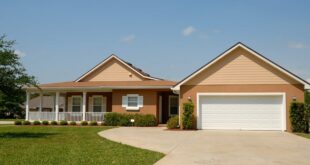Have you ever wondered what would happen if a sudden disaster reached your area and damaged your house? Worry not, for homeowners’ insurance has got you covered. Homeowners insurance is a protection net that provides you insurance in case a truck crashes into your fence or your walls start cracking after heavy rain. But does this insurance include foundation damage? It depends.
What are some common causes of foundation damage?
First, you need to determine the root cause behind the trouble you are having. In some cases, it will be obvious, like damage from a flood or a huge tornado. Other times, minuscule troubles may lead to severe foundation damage. These include but are not limited to:
- Excessive moisture in the soil
- Soil not condensed properly underneath your foundation
- Earth rotations
- Roots of growth under trees
- Busted pipes and plumbing leaks
- Poor construction by home builders
So, are these foundation issues covered by homeowner’s insurance? Let us take a look.
When does homeowners insurance policy cover foundation repair?
When you buy or build a home, you get an insurance policy that explicitly mentions the coverage you will have a right to. Mostly, the Coverage A section of your homeowner’s insurance policy covers the structure of your house as well as the foundation. However, like other coverages, you only get protection against the covered liabilities exclusively listed in your policy. This means if foundation damage was caused by something not named in your policy, you would have to be on your own. If it is instead explicitly listed, the insurer will most likely pay your repair bills.
Most damages covered by home insurance policies are:
- A vehicle accidentally crashing into your house
- Vandalism
- Water damage as a result of overflow in air conditioning, central heating, or plumbing leaks
- Natural disasters such as tornados, earthquakes, etc.
- Fire or explosions
It is important to thoroughly read through your insurance policy to figure out which covered damages are listed. If any of those things are to blame for your foundation destruction, then you have the right to file a successful home insurance request.
When does a homeowner’s insurance policy not cover foundation repair?
To assume that you will get homeowners’ foundation coverage from your insurer after any natural disaster is wrong. In fact, most home policies specifically exclude two of the most common natural disasters capable of doing the most foundation damage: earthquakes and floods. If both or either of these disasters are common in your area, we advise you to buy a separate flood or earthquake insurance policy to protect not just your foundation but all of your house.
Some other issues that can lead to foundation problems but are not covered by insurance include normal wear and tear, poor drainage, temperature rises, and tree roots. If you need proper help with foundation problems then try this repair service. Insurers argue that as a homeowner, you are obliged to conduct proper maintenance on your home. They often label foundation issues due to unevenly compacted soil as carelessness on your part. Furthermore, an improper drainage system can result in dry and wet patches underneath your house, for which insurers usually hold the homeowner accountable.
Temperature changes are deemed as something natural by the insurer, and hence, repairs to damages due to too high or too low temperatures are not paid for by insurers. Lastly, a tree within the vicinity of the house may drain high volumes of water in your soil, leading to foundation issues in your house. Damage as a result of this is not covered by insurance policies.
What are the signs of foundation damage?
Are you wondering how to detect signs of foundation damage in time? Worry not, for we have got you covered. Following are the signs that could suggest you have foundation damage:
- Cracks: Cracks in not just walls but chimneys and tiles or even the home exterior indicate foundation damage. Longer the cracks, the worse the damage.
- Disintegrating foundation: This can be elaborated as a slow deterioration of concrete and, therefore, an improper and failed foundation. Signs include rusty residue or a white powdered appearance.
- Heavily wetted crawl space: If an area is easily flooded, water can easily get into the crawl space and cause water damage to a house. Water is capable of worsening an already deteriorating foundation.
- Warping of home interior: Leaning walls, floors, and ceilings indicate signs of foundation damage. A leveling device can be used to determine whether or not they are accurately leveled. Furthermore, kitchen cabinets may begin to separate from the wall, or nails may pop out of walls. Windows and doors might also not fit anymore.
- Bugs: Observing a lot of bugs can also be a sign of cracks in the foundation since they need gaps in order to enter houses. These gaps can be a result of foundation damage.
How can foundation damage be prevented?
We have all heard of the wise words: “It is better to be safe than sorry.” Even when your insurance policy offers you foundation insurance, it is always better to avoid the issue in the first place. Here are some tips we believe might be useful for you in order to prevent homeowner’s foundation issues:
Get a home inspection before moving in
If you want to buy a new house, make sure to get a home inspection to evaluate every corner before you move in. This helps you know if the foundation is well-built and saves you from a lot of trouble in the future.
Check to grade
In order for the water to drain away from the house, have a grading of a minimum of six inches far from the house.
Regularly maintain the soil
The foremost step of maintaining the soil is to know your climate properly and acting accordingly. Suppose you live in a dry area, water the soil around your house from time to time. If you live in a humid area, make certain the soil properly drains the water as away from your house as possible.
Cleanse your gutters periodically
Clogged gutters can lead to water not being drained where it is supposed to but instead spilling over the surface and flowing directly onto the soil surrounding your foundation.
Mind the trees in your vicinity
Make sure to not plant trees too close to the home so their roots can spread without drenching a lot of water from the soil around the house. If trees are already present, relocate them.
The longer foundation problems are ignored, the worse they become. It is always best to repair a foundation as soon as it starts to crack, as making repairs is easier when there is a small crack.
 HammBurg Be informed with latest news, reviews, entertainment, lifestyle tips, and much more.
HammBurg Be informed with latest news, reviews, entertainment, lifestyle tips, and much more.




